Text
Deep dives into folklore: Fae and fairies
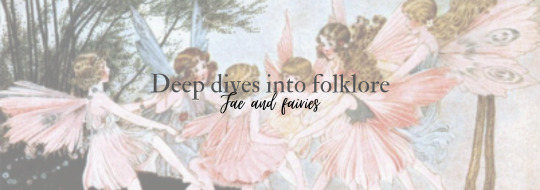
The concept of fae, or fairies, has captivated human imagination for centuries, evolving from ancient folklore to a diverse array of representations in modern literature. These mythical beings, often associated with enchantment, magic, and the supernatural, have undergone a fascinating transformation that reflects changes in human culture, beliefs, and societal values. The evolution of fae in folklore and literature can be traced through various stages, each influenced by historical, cultural, and literary factors.
The origins of fae can be found in ancient folklore from different cultures around the world. In many early societies, supernatural beings were believed to inhabit the natural world, controlling the forces of nature and acting as intermediaries between humans and the divine. These beings were often revered and appeased through rituals and offerings. In Celtic and Norse mythology, for instance, creatures like the sidhe and the elves were considered guardians of the natural world and were deeply intertwined with the land and its magic.
The medieval period saw the development of romanticized portrayals of fae. In this era, literature often idealized the supernatural and the mysterious, portraying fairies as elegant, ethereal beings with both benevolent and mischievous tendencies. These fae became associated with chivalry, courtly love, and the mysterious beauty of nature. They were depicted as enchanting figures who could offer wisdom, protection, or curses. Works like Sir Orfeo and Geoffrey Chaucer's "The Wife of Bath's Tale" highlight the romanticized aspects of fae beings, connecting them to themes of love and desire.
With the Enlightenment came a shift in how fae were portrayed. As scientific thought gained prominence, the belief in supernatural creatures waned. However, the Victorian era saw a resurgence of interest in fae, albeit with altered meanings. During this period, fae often represented hidden desires, societal norms, and moral allegories. Authors like William Shakespeare and J.M. Barrie infused their works with intricate fae characters, such as Puck in "A Midsummer Night's Dream" and Peter Pan in "Peter Pan." These characters reflected the complexities of human nature and societal constraints, functioning as both magical entities and symbols of psychological and moral dilemmas.
In contemporary literature, the evolution of fae continues, reflecting the diverse perspectives and concerns of modern society. Authors like Holly Black and Cassandra Clare have reimagined fae as complex, multi-dimensional beings who navigate issues of identity, power, and ethics. These fae inhabit intricate worlds that challenge conventional notions of good and evil, often mirroring contemporary discussions about diversity, representation, and the blurred boundaries between reality and fantasy.
The evolution of fae in folklore and literature showcases the dynamic nature of myth and storytelling. From their mystical origins in ancient folklore to their romanticized portrayals in medieval times, symbolic roles in the Enlightenment and Victorian eras, and contemporary reimaginations, fae have consistently adapted to reflect the concerns and values of their respective eras. Their enduring appeal lies in their ability to evoke wonder, explore human nature, and serve as vehicles for cultural expression. As long as human imagination continues to flourish, the evolution of fae will undoubtedly persist, shaping and reshaping these enchanting beings for generations to come.
11 notes
·
View notes
Photo
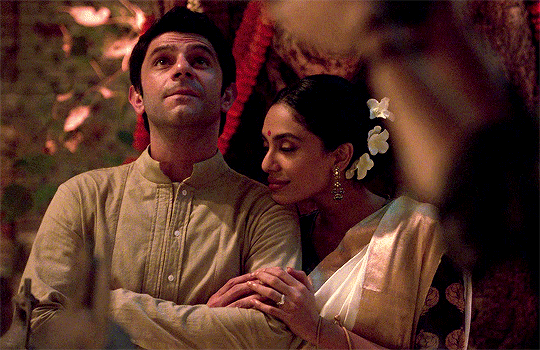




It’s okay. I got you.
Tara Khanna and Karan Mehra
MADE IN HEAVEN Season 1
560 notes
·
View notes
Text

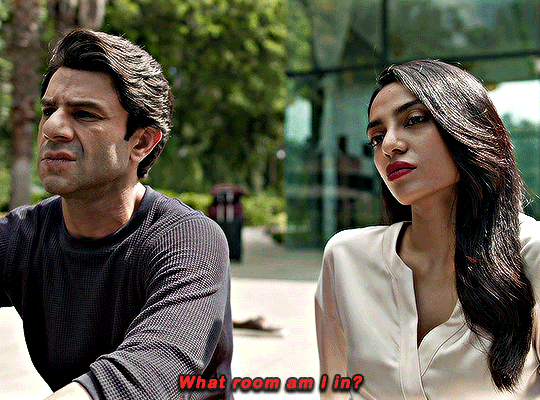

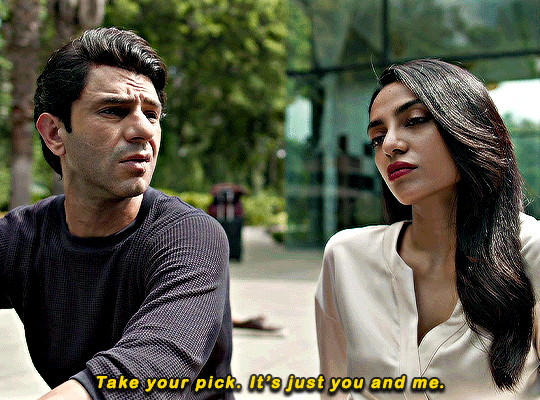
It's just you and me.
MADE IN HEAVEN (2019–) ⦿ 2.07 "A Taste of Heaven" dir. Zoya Akhtar and Reema Kagti
116 notes
·
View notes
Text
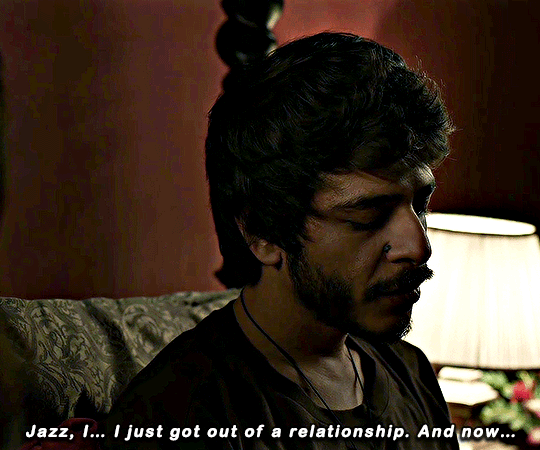
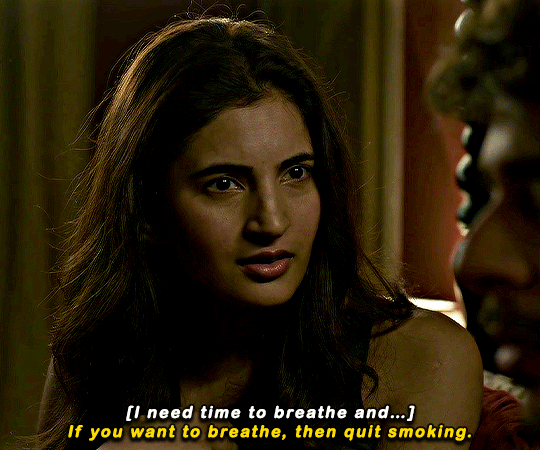

MADE IN HEAVEN (2019–) ✺ 2.04 "Love Story" dir. Zoya Akhtar & Reema Kagti
95 notes
·
View notes
Text
in desperate need of relationships that blur the line between romantic and platonic and are fundamentally neither. they don't conform, they have no label, they are whatever they deem themselves to be, and that's important.
309 notes
·
View notes
Text
HI HOTTIES IT'S TIME FOR MADE IN HEAVEN SEASON 2
4 notes
·
View notes
Text
youtube
gagged the generational wealth- trust fund- Ivy League attending- diasporic Asian author community of Twitter REALLY bad with this one
161 notes
·
View notes
Text
Deep dives into folklore: Mermaids

I have heard in many places this year that 2023 is the year of the mermaid, with rise of ocean inspired fashion, release of the little mermaid and one could even say with dua lipa's mermaid barbie. Before the now wholesome representations of the mermaid, they were represented women's sexuality and vengence.
The origins of the mermaid can be traced back to ancient civilizations, where tales of sea creatures with human-like features appeared in various cultures. In Mesopotamia, the goddess Atargatis was depicted with a fishtail, while the Babylonian deity Ea was associated with water and wisdom. In Greek mythology, the sirens were alluring, half-bird, half-woman creatures who lured sailors to their demise with their enchanting songs. Though not exactly mermaids, these early figures laid the foundation for the concept of human-fish hybrids.
The mermaid we are more familiar with today has its roots in medieval folklore and maritime legends. One of the earliest written accounts of mermaids can be found in the ancient Syrian tale of "The Story of Simbad," which dates back to the 8th century. In this story, the protagonist encounters fish-tailed women on an island, emphasizing the allure and danger associated with these creatures.
During the Middle Ages, mermaids increasingly appeared in European folklore, often portrayed as seductive beings who used their beauty and mesmerizing songs to entice sailors to their doom, possibly taking influence from the sirens of greek mythology. These mermaids were seen as symbols of temptation, warning against the dangers of desire and the unknown depths of the sea.
The Renaissance period brought a shift in the perception of mermaids. As exploration and trade expanded, sailors returned with exotic tales and souvenirs, including depictions of mermaids. Artists of the time were inspired by these accounts and started to portray mermaids in their works of art. Renowned painters such as Hieronymus Bosch and Hans Christian Andersen's iconic "The Little Mermaid" further fueled the mermaid's popularity, embedding her in the realm of literature and art for generations to come.
As scientific knowledge advanced, mermaids gradually lost their mythical status and were relegated to the realm of superstition. The Age of Enlightenment and the rise of rationalism questioned the existence of such fantastical beings. Exploration and scientific discovery revealed the true nature of marine creatures, and mermaids were exposed as mere products of human imagination.
However, the mermaid's allure persisted even in the face of reason and skepticism. In the 19th and 20th centuries, the mermaid took on new forms in pop culture. P.T. Barnum, who you may recognise from the greatest showman, capitalized on the public's fascination with the unknown by exhibiting "The Fiji Mermaid," a grotesque hoax of stitched-together animal remains. Mermaids also made appearances in literature, such as "Peter Pan," where the character of Mermaid Lagoon adds a touch of enchantment to the story.
In the 20th century, mermaids experienced a renaissance in film and television. The original Disney Little Mermaid (1989) transformed the mermaid into a beloved and relatable heroine, providing a new narrative that focused on themes of personal agency, self-discovery, and true love. This reinvention not only delighted audiences but also cemented the mermaid's status as a cultural icon.
With the advent of the internet and social media, mermaids have experienced a resurgence in contemporary culture. Mermaid subcultures have emerged, with enthusiasts participating in mermaiding activities, donning elaborate tails, and engaging in underwater performances. The mermaid has also been adopted as a symbol of environmental activism, reminding us of the delicate balance between human activities and the preservation of marine ecosystems.
Overall, the concept of the mermaid has undergone a remarkable transformation over time. From ancient myths and folklore to modern-day popular culture, the mermaid has evolved from a cautionary tale of temptation to a cherished symbol of beauty, adventure, and environmental consciousness. The enduring fascination with mermaids serves as a testament to their enduring appeal and their ability to adapt to the ever-changing currents of human imagination.
48 notes
·
View notes
Text
Here's a extensive list of character flaws/Addictions to consider for your storytelling:
1. Stubbornness
2. Impulsiveness
3. Jealousy
4. Indecisiveness
5. Arrogance
6. Insecurity
7. Impatience
8. Manipulativeness
9. Hot-tempered
10. Perfectionism
11. Distrust
12. Procrastination
13. Selfishness
14. Pessimism
15. Dishonesty
16. Greed
17. Cowardice
18. Lack of empathy
19. Overly competitive
20. Control freak
21. Lack of ambition
22. Oversensitivity
23. Laziness
24. Lack of self-discipline
25. Addiction
26. Closed-mindedness
27. Lack of assertiveness
28. Impulsivity
29. Materialistic
30. Lack of accountability
31. Inflexibility
32. Moody
33. Overly critical
34. Judgmental
35. Naivety
36. Attention-seeking
37. Suspiciousness
38. Overprotectiveness
39. Ingratitude
40. Vengefulness
41. Envy
42. Indulgence
43. Disloyalty
44. Self-centeredness
45. Negativity
46. Manipulative
47. Disorganized
48. Lack of self-awareness
49. Irresponsibility
50. Intolerance
51. Overthinking
52. Restlessness
53. Excessive need for control
54. Rigidity
55. Overly trusting
56. Recklessness
57. Narcissism
58. Escapism
59. Gullibility
60. Lack of ambition
61. Inability to forgive
62. Excessive need for validation
63. Attention-seeking behavior
64. People-pleasing
65. Overprotectiveness
66. Self-doubt
67. Passive-aggressiveness
68. Inability to handle criticism
69. Lack of boundaries
70. Superiority complex
Remember, a well-rounded character doesn't need to possess all of these flaws. Select a few that resonate with your character's personality, background, and story arc. Balancing flaws with strengths and vulnerabilities will help create multi-dimensional and relatable characters.
Happy writing!
Follow me on my IG for more Content. https://instagram.com/saraswritingtipps?igshid=NTc4MTIwNjQ2YQ==
2K notes
·
View notes
Text
I'd like to get more involved in the writeblr and artblr community, but am (sadly) a very shy individual. So please, if any of the following fits your wip's or your interests and you'd like to talk, interact with this post, so I can find you. <3
• a diverse cast (poc, lgbtqia+, disabled and/or mentally ill mc's)
• a love for redemption and/or corruption arcs
• slowburn romances/friendships/dynamics (I love the disliked to I trust you completely pipeline that takes years and years)
• philosophical themes
• dark fantasy/sci-fi wip's, or contemporary/historical stories that deal with the problems individuals/societies face
• a love for world building, especially when it comes to magic systems, religions and cultures
• complicated relationship webs and group dynamics
• morally ambiguous characters, character driven stories and/or character arcs that go deep into their psychology
• Bonus points if you illustrate your work, I love you, you can do it!!! (lets suffer together)
Also, everyone in general who wants to talk about writing/reading, scream about their oc's or would like to do some reading challenges together! 🌻
1K notes
·
View notes
Text
Character motivations for fictional characters
1. Revenge: Seeking vengeance for a past wrong or harm.
2. Power: Craving dominance and control over others.
3. Love and Relationships: Longing for love, companionship, and emotional connection.
4. Redemption: Seeking to atone for past mistakes and find forgiveness.
5. Survival: Striving to stay alive in dangerous or challenging circumstances.
6. Justice: Fighting against injustice and upholding fairness.
7. Exploration: Satisfying curiosity and a desire for discovery.
8. Ambition: Relentlessly pursuing success and achievement.
9. Freedom: Seeking liberation from oppression and constraints.
10. Knowledge and Wisdom: Thirsting for knowledge, understanding, and wisdom.
11. Family: Protecting and nurturing one's family and loved ones.
12. Acceptance: Craving acceptance and validation from others.
13. Friendship: Building and maintaining meaningful friendships.
14. Escape: Seeking to break free from a stifling or undesirable situation.
15. Truth: Uncovering the truth and exposing lies or deceit.
16. Creativity: Expressing oneself and bringing imagination to life.
17. Competition: Striving to be the best and outperform others.
18. Self-Discovery: Embarking on a journey to understand oneself better.
19. Healing: Seeking emotional, physical, or spiritual healing.
20. Faith and Belief: Holding strong religious or spiritual convictions.
21. Mentorship: Guiding and inspiring others to reach their potential.
22. Revolution: Fighting against oppressive systems and advocating for change.
23. Sacrifice: Putting others' needs above one's own and making difficult choices.
24. Fear: Overcoming fears and finding strength in the face of adversity.
25. Fame: Desiring recognition, acclaim, and celebrity status.
26. Identity: Discovering and understanding one's true self.
27. Empathy: Understanding and connecting with others' emotions and experiences.
28. Tradition: Upholding cultural or familial traditions and values.
29. Rebellion: Resisting authority and challenging the status quo.
4K notes
·
View notes
Text
u guys know sexuality gender and the way u feel attraction can change right. u know you can put labels on and off right. nothing is solid swim a little if you like etc
33K notes
·
View notes
Text
we need to accept that greta gerwig never had anything new to say about feminism
#reblogging#bc#its pissing me off that we aren't allowed to say barbie was mid#because the whole point of the movie is about how girls strive for perfection so you're just being ironic haha#well#it was still mid??#like even if that was the point#i'm not going to pretend it was groundbreaking
46 notes
·
View notes
Photo

serena crane, sometimes, i watch horror movies to relax
425 notes
·
View notes
Text
this is out of left field but a book rec list!! specifically, books that have to deal with consumption of women/cannibalism/ecofeminist themes (basically, feminist, food-centric horror)
1. The Vegetarian by Han Kang
This book is SO good but definitely check the trigger warnings. Told from three different perspectives, it follows a woman after she has a life-altering dream that makes her go vegetarian, much to the dismay of her family. The thing that stuck with me most about this book is how it portrays the normalized but profound betrayals by men that women experience. It’s a mix of “The Yellow Wallpaper” and My Year of Meats
2. My Year of Meats by Ruth Ozeki
Another meat-centric book! This one switches between two women, one in America and one in Japan, as they navigate the world of meat consumption and how patriarchy and misogyny are reflected in it. There’s a very mixed-media feel to this as every section starts with a poetry excerpt by Sei Shonogan and one of the main characters, Jane Takagi-Little, is directing a series on American meat consumption to promote eating meat in Japan. All of Ruth Ozeki’s books are wonderful so if you like this, you should read them all.
3. Tender is the Flesh by Agustina Bazterriva
This one is straight up cannibalism. It’s about a man, Marcos, who works at a meat processing plant that makes “special meat” (human) and is gifted a “specimen” for him to eventually slaughter himself. The specimen is a woman, Jasmine, who Marcos eventually forms a relationship with. This one is overtly dystopian and although certainly very dark, a little more palatable because it allows the reader to feel more distant from the reality of the book. Of course, though, there is till some very striking commentary on the abuse and exploitation of animals, women, and people as a whole.
4. What Moves the Dead by T. Kingfisher
This one is different from the others in that the consumption comes from fungus and not literal people, but there’s still a deep-seated sense of rot. The main character, Alex Easton, returns to the ancestral home of their childhood friend as they learn she’s dying. There is a distinct supernatural element to this, but still very heavy with animal and body horror.
5. A Certain Hunger by Chelsea Summers
Dorothy Daniels, the main characters, is a food critic, sex lover, and psychopath. This one, again, explores the relationship between the treatment of women as sexual beings and commercialized consumption. Also, again, cannibalism. However, this one is very White Feminism, so take that into mind.
all of these books are very good but all have very heavy trigger warnings, so please please look them up before reading. happy reading, my pals <3
733 notes
·
View notes
Text
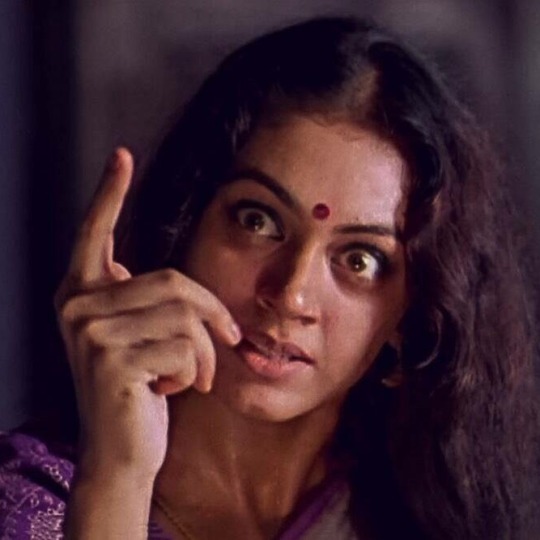
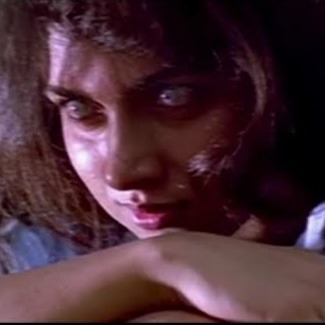
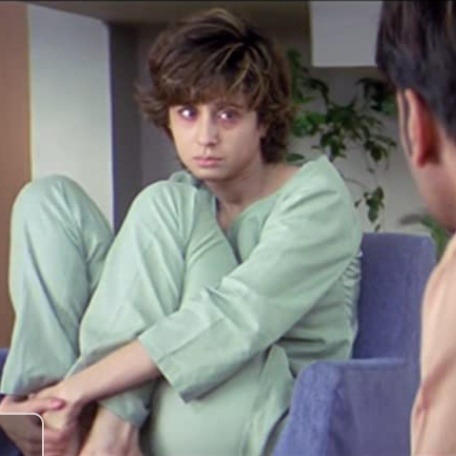
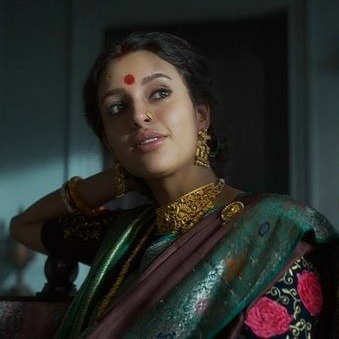



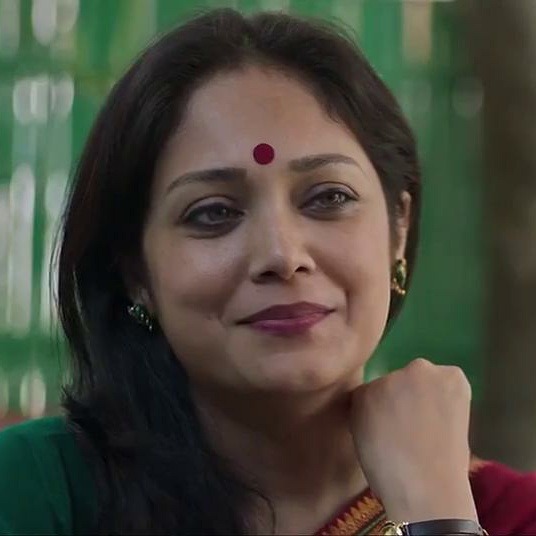

girlies of indian horror
shobana in manichitrathazu//revathi in raat//urmila matondkar in bhoot//tripti dimri in bulbbul//vidya balan in bhool bhulaiya//juhi chawla in darr//waheeda rehman in kohraa//lima das in aamis//sadhana in woh kaun thi?
2K notes
·
View notes
